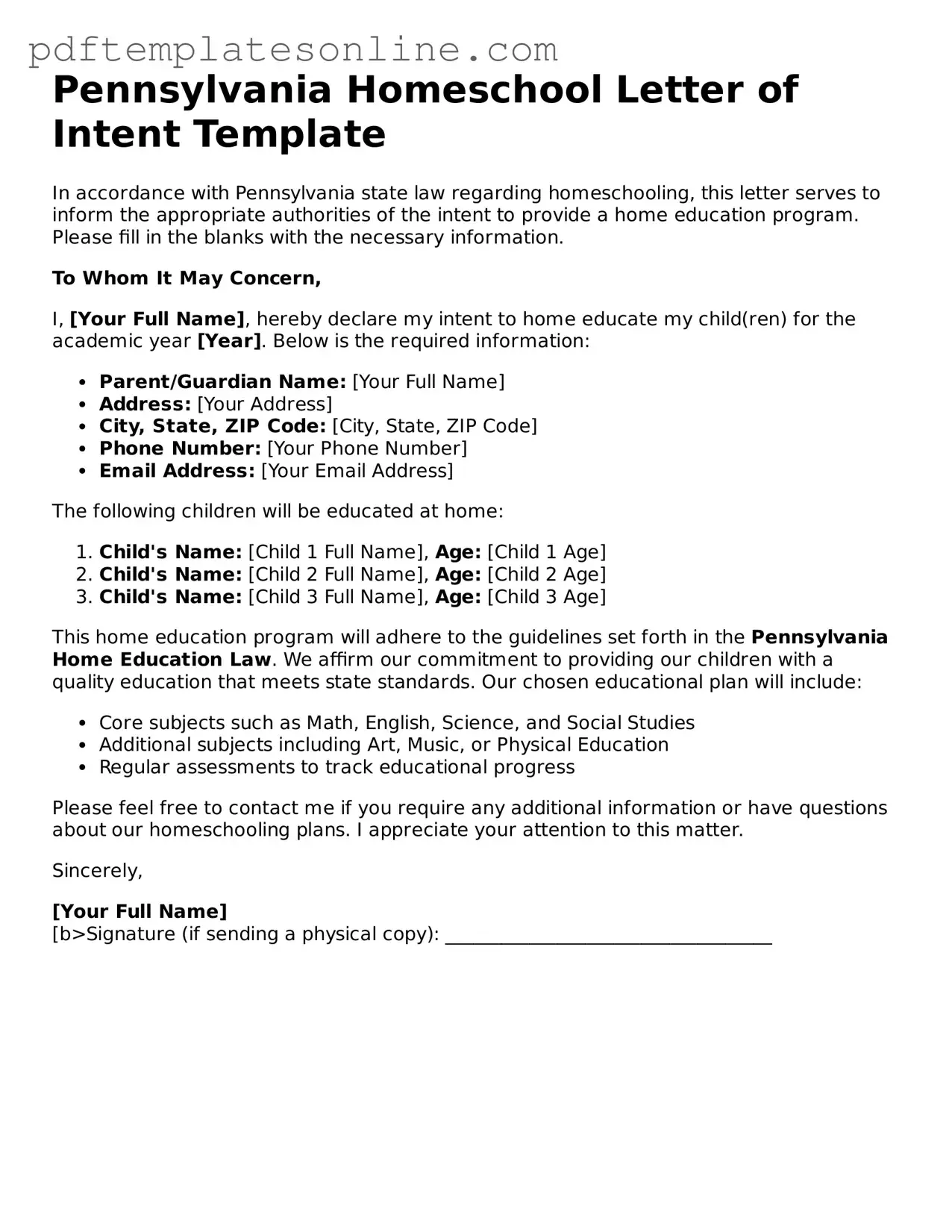Completing the Pennsylvania Homeschool Letter of Intent form can be straightforward, but many individuals make common mistakes that can lead to delays or complications. One frequent error is failing to provide accurate personal information. Parents must ensure that their names, addresses, and contact details are correct. Inaccuracies can create confusion and may lead to communication issues with school districts.
Another mistake is neglecting to specify the educational program being used. Pennsylvania law requires that parents indicate the curriculum or educational approach they plan to follow. Without this information, the letter may be considered incomplete.
Some parents overlook the deadline for submitting the letter. The state requires that the form be submitted at least 14 days before the start of the school year. Missing this deadline can result in the need to wait until the following year to begin homeschooling.
Additionally, not including the number of children being homeschooled is a common oversight. This detail is essential for the school district to understand the scope of the homeschooling arrangement. Omitting this information can lead to unnecessary follow-up requests.
Many individuals also fail to sign and date the form. A signature is a legal requirement that confirms the intent to homeschool. Without a signature, the letter cannot be processed.
Some parents mistakenly assume that they can submit the letter electronically. However, Pennsylvania law requires that the letter be mailed or delivered in person to the school district. Ignoring this requirement can result in delays in getting approval.
Another frequent error involves not keeping a copy of the submitted letter. It is crucial for parents to retain a copy for their records. This can help address any future questions or concerns from the school district.
Inaccurate information about the educational history of the child is also a common mistake. Parents should provide a clear account of any previous schooling. Failure to do so may raise questions about the child's educational background.
Some individuals misunderstand the need for additional documentation. While the letter itself is essential, parents may also need to provide proof of immunizations or other records, depending on their circumstances. Not being aware of these requirements can lead to complications.
Lastly, parents sometimes forget to follow up after submitting the form. It is advisable to check in with the school district to confirm receipt and to address any potential issues. Proactive communication can help ensure a smooth start to the homeschooling journey.
